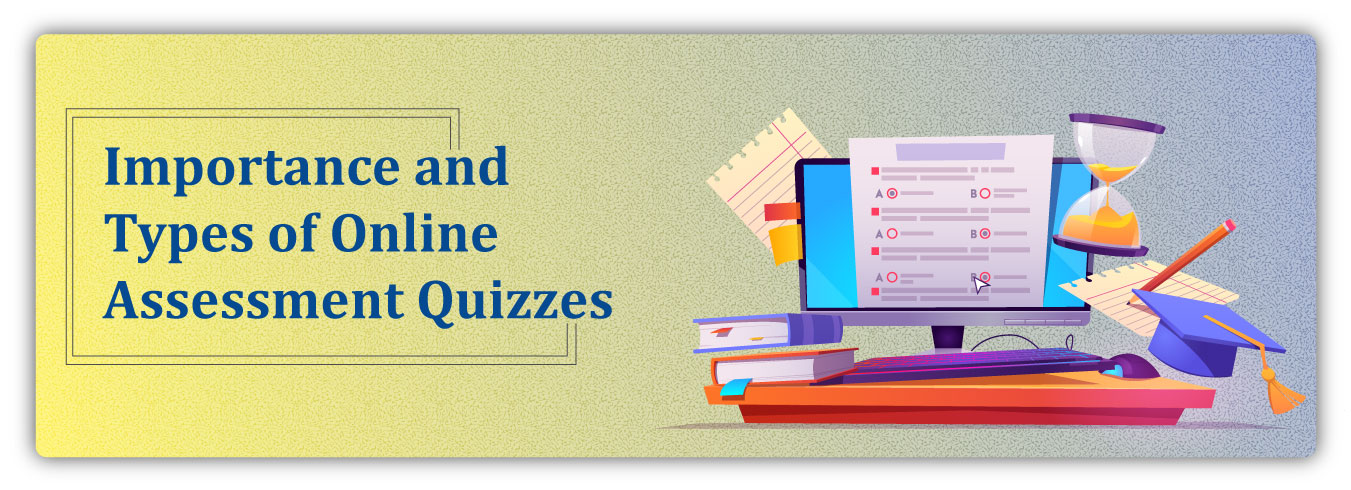All of us, teachers or students, are now more open to online learning platforms. Undeniably , Quiz websites have gained popularity. Most of us use them as stand-alone or in tandem with teaching programs. Many of us have also used some form or other of Online Assessment. While some websites just offer Online Quiz Questions and a score, some like Auroscholar take it a step ahead. They provide scholarships for students, based on their Online assessment.
During the pandemic, online assessments have gained popularity. In this blog, we will explore Online Assessments and popular methods used for the same.
Online Assessment
Online learning uses online assessments to determine how much we have learned. They have long been an important instrument in education. Inability to access online assessments puts students at a disadvantage. Online Assessment Quizzes make tracking a student’s progress simple. The kids will be able to focus on their weak areas in this manner. Overtime, digitization of education is a result of technological advancements. In the meantime, Online assessment has evolved into a tool that can save not only time but also resources.
Online assessments have benefited education in a variety of ways by assisting students to better understand teachings.
Scholarship for Students Through Online Evaluation
Quizzes are enjoyable for the majority of us, as a result, the majority of online education sites employ quizzes to make learning more enjoyable. In countries like India, certain organizations have employed quizzes to grant scholarships for students. These are granted on the basis of performance. Online assessment provides an efficient way of giving micro-scholarships to students.
Evaluation
Before we get into what and how to assess online, let us bifurcate the aspects of learning for online assessment. Broadly speaking, these are the following aspects that can be assessed through e-learning.
- Interactivity, collaborative Digital learning
- Collective construction of knowledge
Vertically there are two types of Online assessment: Formative and summative
1.Formative Evaluation
In Formative Evaluation, Instructors and students receive timely and frequent feedback. This Feedback consists of knowledge and learning objectives. IInstructors are, sampling student learning and offering feedback based on the findings to adjust training and the learning experience. Students can use comments to identify areas where they need to study more.
2.Summative Evaluation
The outcomes of summative assessments are used to assign marks to students and draw broad judgments. This is used by quiz websites to evaluate their mastery of course digital learning goals. Even while having more assessment assignments is preferable to having too few, teachers must exercise caution when using an excessive number of assignments. Students may focus on quantity rather than the quality of deeper learning if there are too many tests.
A cloud-based solution for delivering online tests is a must-have for anyone who wants to deliver online examinations. There is no need to purchase any specific equipment to give the test this way. A cloud-based assessment tool allows for speedy implementation. With cloud-based systems, there is no need to be concerned about the learner’s level of computer proficiency.
Continuous evaluation
Assessments are necessary as a baseline to guarantee meeting a course’s digital learning objectives. Online assessment for a variety of different reasons. Following are some:
To improve personal and professional lives by learning something new.
To meet a licensure or accreditation requirement, you must learn something new.
This is why an assessment’s outcomes must be quantifiable in some way since this allows you and your members to track the changes that occurred as a result of the course.
Measuring this transformation offers advantages for both your members and your educational institution:
- Understanding this transformation gives information regarding, both your members’ knowledge and the usefulness of your courses. This gives you the ability to create courses and make recommendations that will benefit your members’ professional development.
- Measuring this shift helps us to acquire qualifications, licenses, and accreditation to improve our professional/academic profiles. We can also assess our own knowledge and identify areas for improvement.
Types of Online Assessment Used by Quiz Websites
You can utilize a range of different sorts of eLearning exams to evaluate others and yourself.
The exams you use will be determined by a number of things, including your course’s learning objectives and the assessment functionality of your LMS. You’ll want to have a number of assessment styles in your toolset because your objectives will differ throughout and within courses.
1. Multiple-Choice and Multiple Response
Multiple-choice tests ask you a question and then give you three to five options for answering it. Learners receive prompts to pick one right response that corresponds to the question.
Multiple-response exams are similar in that they ask a question and then provide a list of possible answers. However, because numerous response alternatives may be valid in this case, learners must identify all of the proper options.
These types of tests are ideal for determining basic fact memorization. Multiple-response is slightly more difficult than single-response, especially if the number of right answers isn’t mentioned in the query.
2. Sequencing
As learners, we are challenged to place things in a specified order in sequencing.
Timetables are a useful way to carry out sequencing. Consider the case when you’re designing a course in which students must learn about the history of a process they’ll be using. You might give the student the key moments in the development of the process out of order and then ask them to put them in the correct order.
Describe a procedure in detail. Let’s imagine you’re teaching students how to do a task that requires them to complete a series of steps in the correct order. So, to assess learners’ memorization of the method, present the steps out of order and ask them to sequence them in the correct order.
3. Scenarios
Scenario-based assessments immerse learners in a situation and ask them to make decisions within the situation to bring it to a successful end. There are a variety of scenario types, including:
1. Skills-based scenarios: In this scenario type, the learner is placed in a scenario and asked to apply the skills and knowledge that they’ve acquired to it.
2. Problem-based scenarios: Learners immerse in a situation that has gone awry and asked to apply their skills to identify and solve the problem at hand.
3. Speculative scenarios: Learners encounter a situation and have to predict the conclusion of the scenario using deductive reasoning.
4.Gaming scenarios: This scenario involves testing a learner’s skills using a gamified, perhaps less realistic application of the knowledge.
Because scenarios are immersive, learners can practice applying skills in an environment where there are no consequences. This evaluation style, for example, benefits medical workers obtaining CME credits through a CME LMS since it allows them to practice medical skills in a risk-free environment before engaging with patients.


